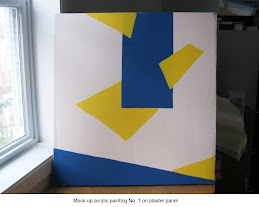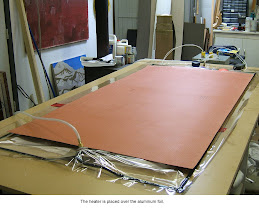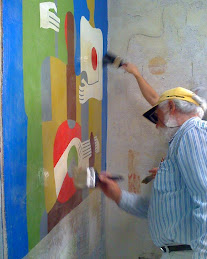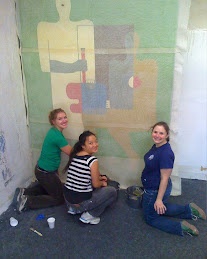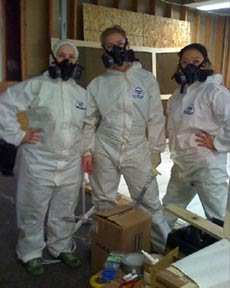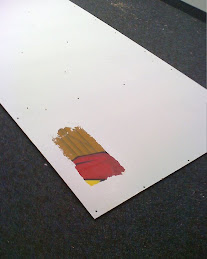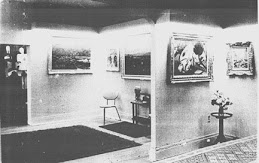Thursday, July 2, 2009
The History of the Murals
The murals were completed in 1953 by William Perehudoff at a time before his work was well-known. His talent, however, did not escape the attention of Fred Mendel, an avid art lover. Mendel was a Jewish immigrant who made Saskatoon his home after fleeing the holocaust in Nazi Germany. He was also the founder of Intercontinental Packers, the company where Perehudoff worked doing manual labour. In 1953, Mendel was already widely respected for his fairness, integrity, and great business skill. He was also known for the respect and compassion with which he treated his many employees. Mendel hired Perehudoff to make art for his factory in the interest of making his meat packing plant more hospitable for his employees. He also likely wished to support a talented young artist. Perehudoff made several works for Mendel in the 1950's, among them were these murals which were painted directly onto the plaster walls of Mendel's office. In later years Fred Mendel became one of Saskatoon's foremost philanthropists, and the founder of the Mendel Art Gallery.
Perehudoff went on to become one of Canada's foremost artists. He is regarded by many as the heir to Jack Bush as Canada's most important colour field painter. In 1963, Clement Greenberg, arguably the world's most respected art critic at that time, characterized art from Saskatchewan as "New York's only competition." William Perehudoff's art was likely among the work Greenberg was describing.
In 2008, Mendel's meat packing plant became scheduled for demolition to make way for a new freeway. The cost of professionally removing the murals from the plant seemed prohibitive and no organization had the money to do the work. When it became known that the Perehudoff murals would be destroyed in the demolition, several concerned citizens organized a grassroots campaign to raise money and volunteers to save the art. While it seemed impossible to afford a complete restoration, organizers hoped that significant portions of the art could be saved for less money using ingenuity and volunteers from all walks of life.
Perehudoff went on to become one of Canada's foremost artists. He is regarded by many as the heir to Jack Bush as Canada's most important colour field painter. In 1963, Clement Greenberg, arguably the world's most respected art critic at that time, characterized art from Saskatchewan as "New York's only competition." William Perehudoff's art was likely among the work Greenberg was describing.
In 2008, Mendel's meat packing plant became scheduled for demolition to make way for a new freeway. The cost of professionally removing the murals from the plant seemed prohibitive and no organization had the money to do the work. When it became known that the Perehudoff murals would be destroyed in the demolition, several concerned citizens organized a grassroots campaign to raise money and volunteers to save the art. While it seemed impossible to afford a complete restoration, organizers hoped that significant portions of the art could be saved for less money using ingenuity and volunteers from all walks of life.




